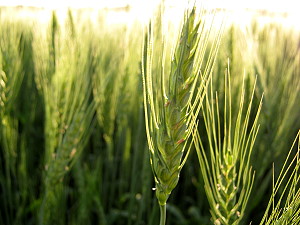 Northwest Region Crop Report Prepared by: Manitoba Agriculture
Northwest Region Crop Report Prepared by: Manitoba Agriculture
August 10, 2021 |
Northwest Region
A break in the high temperatures this week was welcomed for a few days, along with higher humidity and isolated thundershowers. Most parts of the region received at least some rainfall, although smaller amounts in areas that could benefit the most. Minitonas/Birch River received the most precipitation with 23 mm accumulated. Water sources and soil moisture conditions across the entire region continue to remain very dry.
Field pea harvest is underway across the region. Yields are reportedly lower with the average about 35 to 40 bu/ac range across most of the region, and a little higher near Grandview with 45 bu/ac average. Averages may change as harvest continues. Desiccation also continues as stages are reached.
Desiccation of spring wheat across most of the region is occurring as stages are reached, with the exception of The Pas where most wheat is at soft dough. Harvest has begun in the southern portion of the region with a wide range in yield and quality, although just starting and still early to base an average. Oats and barley continue to ripen. Canola for most of the region is podded and ripening. Canola in The Pas is 90% podded, with the remaining in the flowering stage. Sunscald has become evident due to recent high temperatures and UV indices. About half of the canola in the region is rated as good, with the remainder rated as fair and a small percentage in poor condition.
Soybeans across the region are at R3 to R4, with the southern part of the region in the more advanced growth stage. Soybeans are rated as good condition so far, with some regions receiving timely rains and will help the crop.
Insect monitoring has wrapped up and accumulated trap counts remained below concern for Bertha Armyworm and diamondback it is suggested to continue monitoring.
Lygus bugs have become a concern in Swan River region where counts exceeded threshold and control was warranted in younger canola; flea beetles have also seen high numbers again. Grasshoppers also remain a large concern across most of the region.
Monday’s rainfall was very welcome across the area, especially for regrowth on pastures and hayfields, although the amounts received have not been significant and there are areas that have been missing the rains.
Producers continue to bale up straw, ditches as well as low-lying areas of sloughs and lakeshores to secure additional feed. Hay yields are being reported at 15 to 20% of normal in the areas severely affected with dry conditions with higher yields on newer, well fertilized stands that received more moisture. Harvesting of annual crops for feeds is ongoing. In the western side of the region, producers are taking a second cut prior to August 15th in respecting the critical fall harvest period to reduce the likelihood of winterkill in alfalfa where sufficient regrowth occurred.
Cobs are forming on corn silage fields with producers worried on how they will develop without adequate soil moisture.
Feed supplementation on some pastures is occurring with creep feeding for calves and with the use of protein tubs. Numerous pastures have gone dormant, herds have been sorted, and some sent to cull markets. Water supplies remain low and water is being hauled to livestock. Grasshoppers remain a concern across the entire area.
